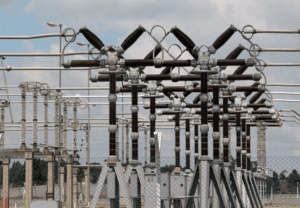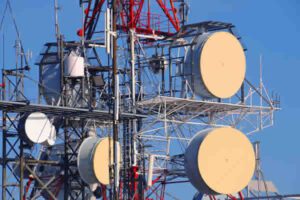Electricity tariff: Putting returns in view by the force of codified metering system
Electricity tariff rate has become topical recently. Since the privatisation of distribution companies (DisCos) took effect from 2013, the need for returns has become much resounding for private operators who took over the companies from the public domain driven by the Government. Like every private entity would do every thing not to run at a loss, the need for measures for these companies to break even and remain in business with profit is non-negotiable.
However, it has become glaring that the necessary infrastructures to facilitate the coordination of mutual relevance, from the top side of the distribution operators to the receiving end of the users, have not been fortified enough to achieve the desired result. The inconsistencies, among other glitches from other lines of the production chain, have been the ground for resistance from some parts, and grievances in some other quarters over the use and charges of electricity in the Country. Hence, a line of tussle has been fitly drawn within some quarters on the determining instruments that guide the drafting of billings viz-a-viz the value of electricity consume.
Addressing the issue of sustainable and reliable power supply in Nigeria has been a subject of broad concern over time. Like many other matters of developmental debate, the issues surrounding the Country’s power sector are deep seated. The yearnings for a reliable power supply routed along coordinated framework of sustainability and reliability, has been a case ridden with cacophonic disarray. Among many subjects aligning with the frame of concern, the subject of charges and electricity tariff which has become more controversial, following the privatisation of Distribution Companies (DisCos) in the Country has Bern much vociferous. The controversies over the determination of tariffs and bill-charges issued to electricity users have been shrouded with obliquity – a development that has made users challenge what they recently described as ridiculous exorbitant charges, incommensurate with what they have consumed. The controversies have led to the call for metering, which as believed, constitute a system of determinable framework to weigh and bring into parity, the value of electricity consumed and the charges paid. Although the call has remained justifiable, yet the profile of the move towards the end have not been greeted with the sufficient parameters required to bring such architecture into a reliable ground. This is just as the percentage of consumers metered is still largely far from the desideratum. The deficits, among other operational constraints, have continued to pitch the system to the corridor of disfiguring posture.
Recently in November, the Federal Government had taken steps which may further affect the interest and the commission towards mass metering, following an astronomic increase of an additional N13,766 and N26,829 to get single-phase and three-phase pre-paid meters respectively from the 11 Distribution Companies (DisCos). The increase which was to take effect from Monday, November 15, 2021, was contained in a circular issued by the Nigerian Electricity Regulatory Commission (NERC), raising the price of a single-phase meter from the current price of N44,896.17 to a revised price of N58,661.69, while three-phase meter has been raised from the current cost of N82,855.19 to a revised rate of N109,684.36. The NERC had in the circular dated November 11, 2021, addressed same to Managing Directors of all DisCos and all meter asset providers. The circular, with reference number NERC/REG/MAP/GEN/751/2, was entitled ‘Review of the unit price of end-use meters under the Meter Asset Provider and National Mass Metering Regulations.’
It would be recalled that on July 14, 2021, the Federal Government had mentioned that it would distribute over one million prepaid meters free for stable power supply. The NERC had then mentioned that no less than 1,092,399 customers have been metered by electricity Distribution Companies (DisCos) under the Meter Assets Provider (MAP) scheme and the National Mass Metering Programme (NMMP). The NERC had made the disclosure in a reply to a Freedom of Information (FOI) application by an electricity consumer group, All Electricity Consumers Protection Forum (AECPF), which had requested for data on the number of meters distributed by the DisCos under both programmes. In a letter, which was signed by the Commission’s Secretary, Mrs Ada Ozoemena, on behalf of its chairman, the NERC had said 508,439 customers have been metered so far under the MAP scheme of the Federal Government which was flagged off on Oct. 30, 2020 with a target of six million meters by 2023. The regulatory agency had said 583,960 meters had been distributed under the MAP scheme, adding that 5,855 customers who had paid for prepaid meters were yet to get their meters as at then.
It can be submitted that such inconsistencies in targets and factoring provisions are counterproductive to established objectives. Where astronomic increase on the prices of meters is recorded while making efforts to expand the coast of incorporating more users under the metering system, the aftermath bears strings of backward push. The prevailing system largely gripped under the claws of huge deficits which have been ridden with lamentation of users’ hostilities to pay bills detrimental to the part of the DisCos, and coloured with controversies of resistance to what is seen as exorbitant bills under ill-parameters of value determination of consumption of electricity and the charges, on the part of the users, has been undesirable. It is glaring that both ends have been, one way or the other, situated at troubled zones, such that while consumers want to be charged for what they use actually, DisCos who have been lamenting losses want to get returns from their investments, just as the Government would want to get taxes from the operators for revenue. It is therefore, in the best interest of all that the Government as the structural coordinating organ, device strategic measures of inputs for rational interventions towards the end of vitalising the metering system in the Country to a formidable status that shrinks the prevailing deficits to the bearest minimum. The option of appreciable subsidies to facilitate the accessibility and availability of meters for mass capturing is not out of place. This is essential to bring many who have been left out of the framework, but are one way or the other using electricity, under the system. With massive capturing, the question of energy theft can largely be checked with codified technology that reduces its possibilities to the bearest minimum. This way, the operators would readily benefit on returns in the long run, while taxation and regulations become easier for the Government to administer, just as the clamour of citizens would be addressed systematically.




